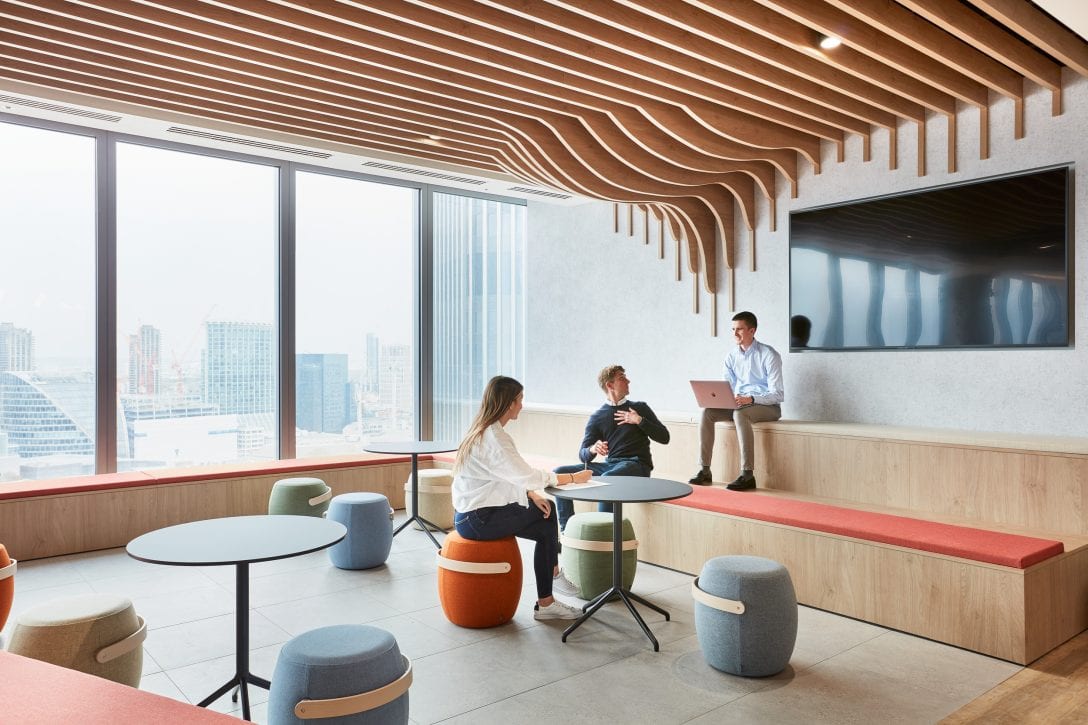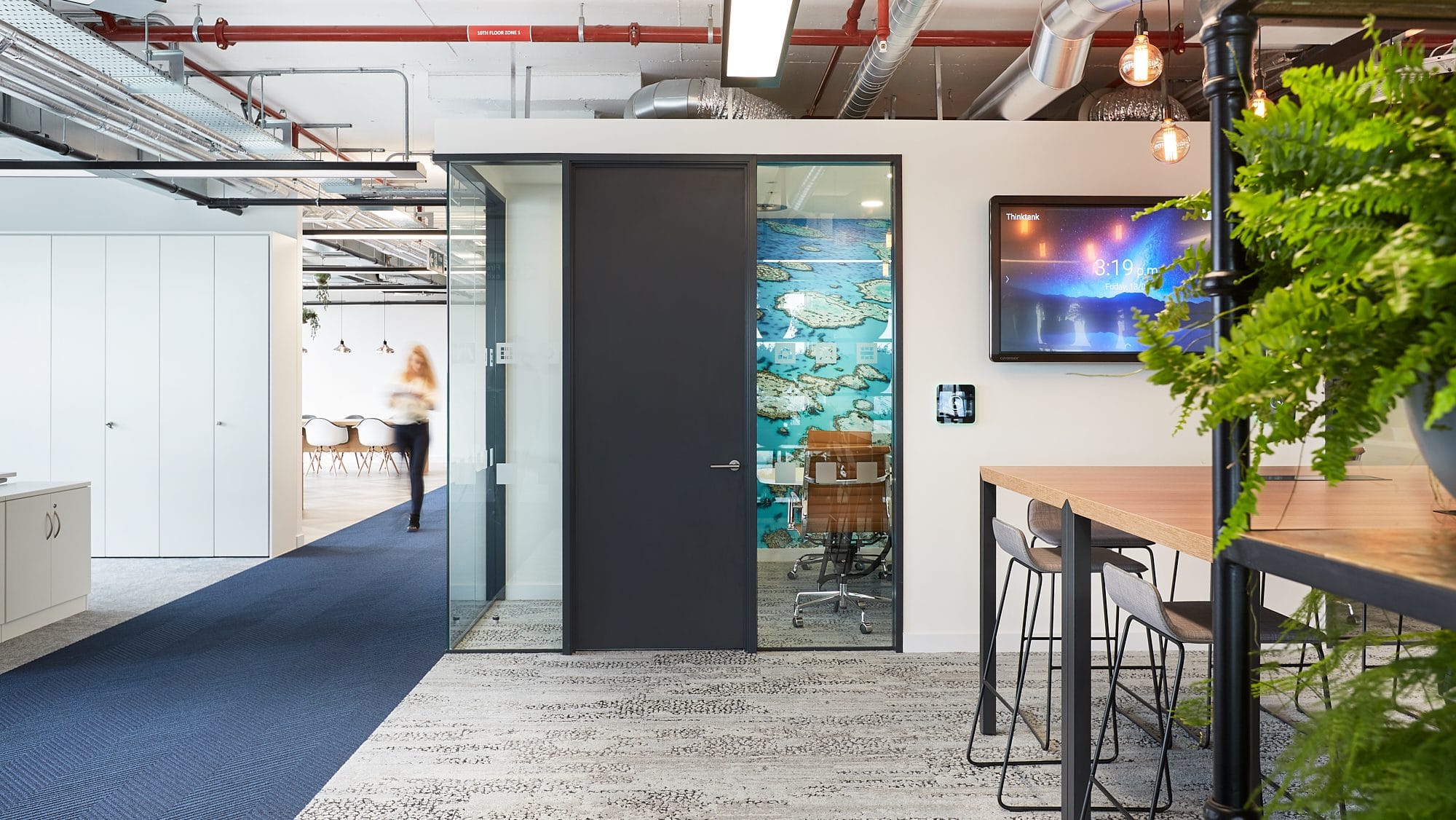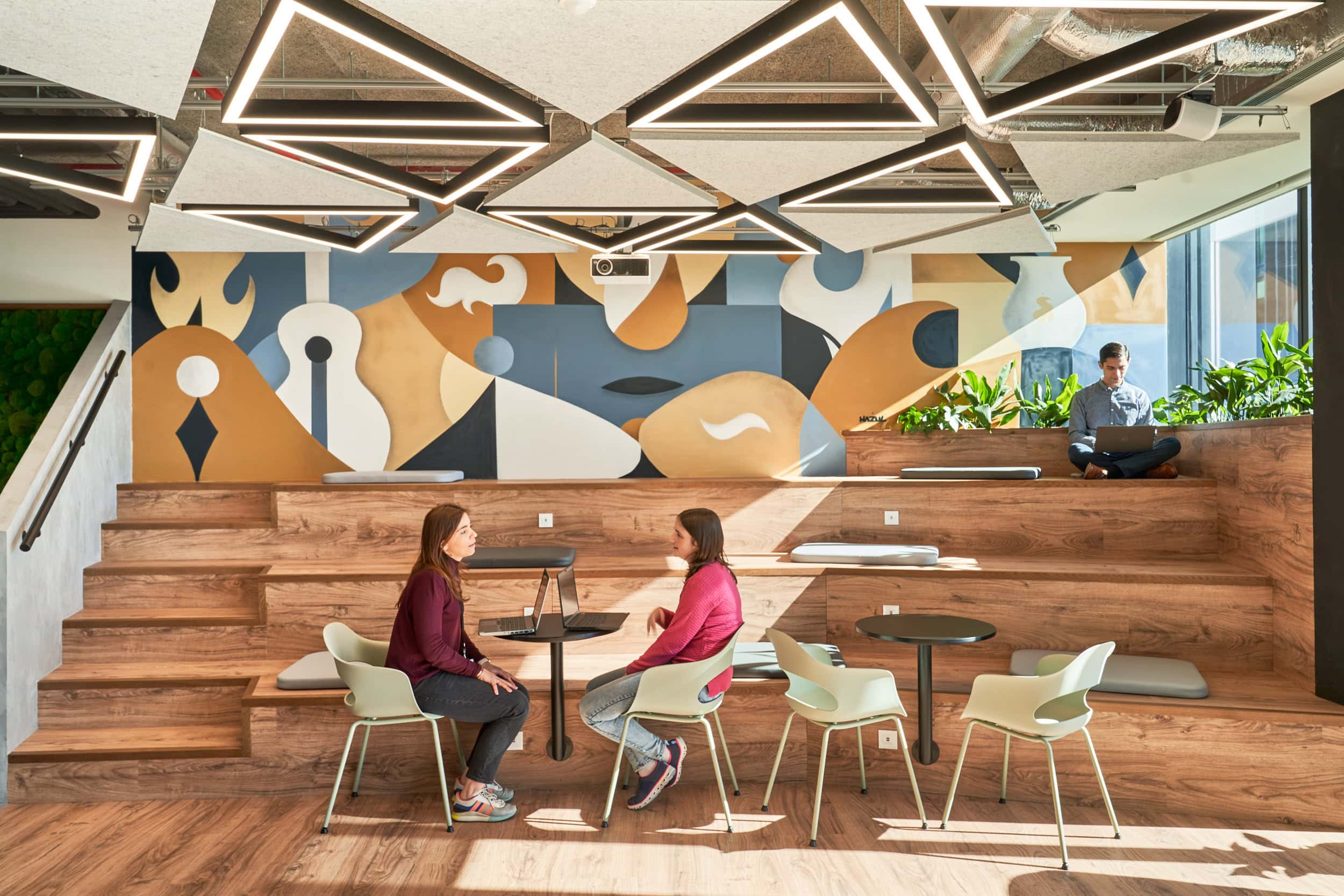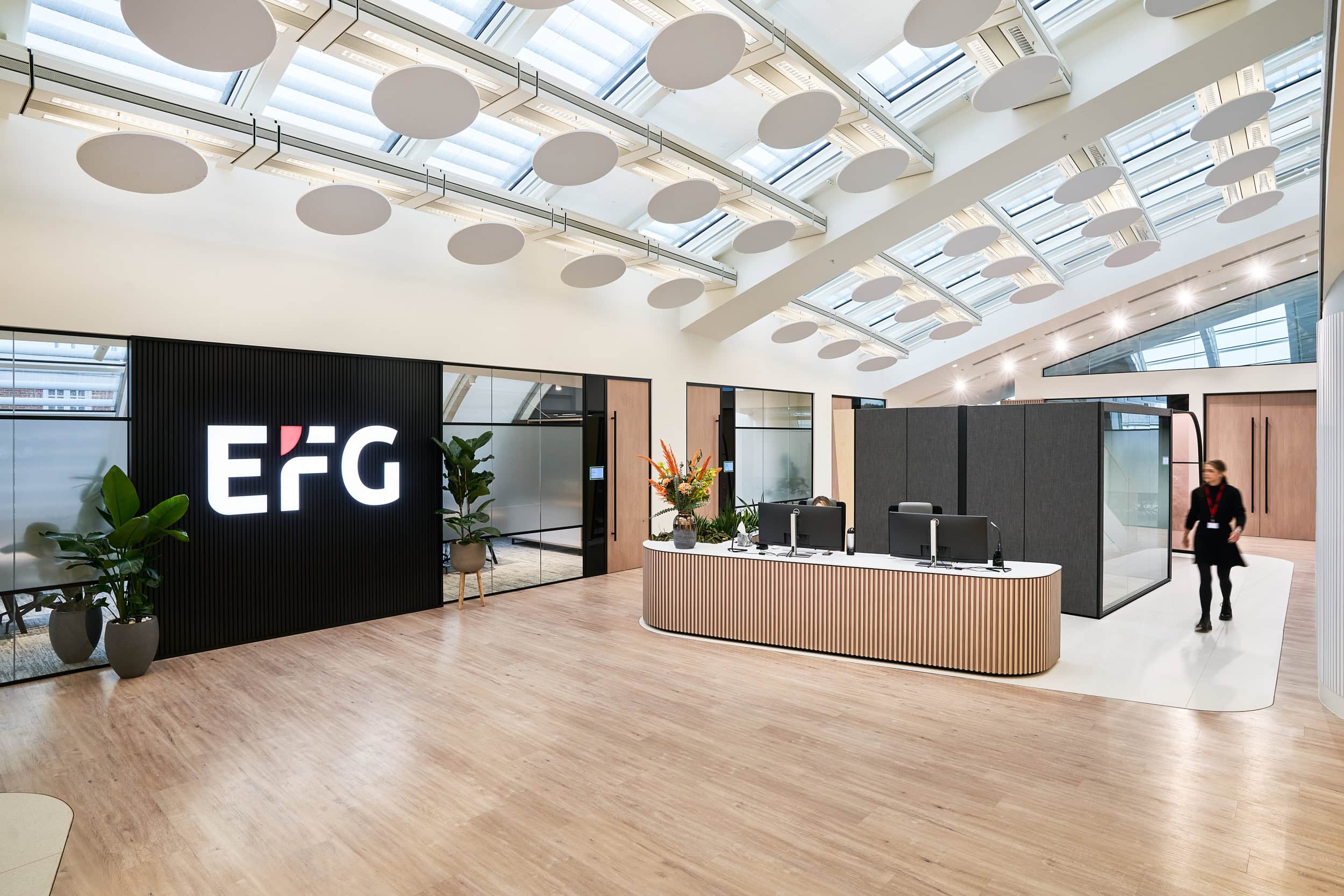How to design a collaborative office design
Enhance your employees' collaboration through our expert insights on crafting a collaborative office design.

Collaborative office design: definitions and guidance
Collaborative office design involves workspaces that are set up in a way to encourage people to work together. Giving them the chance to move around freely and have reducing the availability of closed-off spaces.
The benefits of having a collaborative workspace
Collaboration emphasises freedom, creativity and integrating thoughts from several unique perspectives. Studies have found that productivity increases by 15% in workspaces that encourage group work, interaction, and brainstorming. In these open-planned spaces, colleagues can easily chat to each other about work without having to schedule a formal meeting. This improves your business’s general efficiency and allows the team to complete tasks more quickly.
Collaborative workplaces also improve the social atmosphere. This plays a large role in your team’s satisfaction and ability to work together to create inspired outcomes.
How to create a collaborative office design
Your collaborative workspace should reflect your organisation’s vision. Ask yourself what you want to achieve, what your employees need, and what you can realistically incorporate into your space and budget. Then, follow our tips to encourage your team to work together efficiently.
16% of time lost in the office is because of employees looking for a space to collaborate. Effective collaborative space needs to have enough room for the ‘spread out’ requirements of group work. Ensure to accommodate for teamwork and audio privacy with flexible furniture.
Get rid of walls
Walled rooms are not mentally stimulating. They offer little flexibility and lock employees in one place, rather than allowing for progression, both physically and mentally. Collaboration inspires innovation, which is bound to push your business to do even greater things.
Remove any physical barriers to give your staff more freedom and you will quickly see your team become more productive. Look instead to create separate spaces via the use of movable wall elements, such as ceiling hung acoustic panelling. These not only give your staff control and flexibility to create their own spaces depending on their specific requirements, but also provide acoustic privacy.
Decorate to inspire
Vibrant colours, interesting textures, and decentralised furniture are more likely to bring out the creativity of your team than white walls and stuffy conference room style furniture. The more comfortable and liberated employees feel in their workspace, the more inspired and collaborative they’ll be.
One important aspect of your internal setup is furniture that does not promote a hierarchy. Round tables and flexible seating options such as stools which can easily be moved around encourage employees to discuss and share their ideas. Flexible furniture, such as rolling chairs, also allows your workers to adapt to their physical surroundings and gather with others with no issues.
Create different spaces for different purposes
Workers collaborate in a range of different ways. By creating a variety of different spaces for different interactions, you will maximise the potential of all social gatherings.
Mixed-use areas include furniture clusters that allow employees to approach their work flexibly. These workspaces could include comfortable floor seating which would allow people to work individually in each other’s presence. This is ideal when people are looking at different aspects of the same project. This way, they can operate in whatever way is most comfortable to them as well as exchanging ideas or asking questions.
Huddle rooms include a mix of tools such as whiteboards, computer screens, and books, as well as flexible seating options. These areas are suited for both collaborative and individual work but also a great option for a group to gather, discuss or brainstorm ideas. The core objective of equipment in these rooms should be to ease communication and processes.
Collision rooms are communal spaces strategically placed where people gather to take breaks. This may be to get food or coffee or to get a breath of fresh air. People will often run into each other in these areas. This is where they relax and recharge, but also where they can connect with their team most conveniently. Here, ideas can be spontaneously generated in a more free, relaxed environment, and the team can get to know each other better. This will lead to more in-sync future collaborations and group decision-making.
Embrace technological advances
Nowadays, technology is an enormous factor in communication. Including the latest, relevant innovations and making sure that all employees have access to the devices they need will allow your team to communicate with each other more easily. For example, electronic devices can support information sharing, facilitate brainstorming, and allow for effective research.
With the rise of remote working following the pandemic, its important to have technology designed to facilitate group work. This is needed both in-office and remotely to allow for quick and seamless collaboration between in-office and remote staff.
Balance us-time with me-time
Studies show that collaboration is one of the most important factors in employee satisfaction. More than half of all satisfied employees collaborate with five or more people at their office on any day. Whilst two-thirds collaborate with people outside of their office at least once a week.
However it is equally important for social time to be balanced with individual focus time. Make sure you offer quieter and more secluded spaces for them to retreat to as well.
Support productivity by supporting collaboration
Employees look for effective ways to collaborate as a team. Offices need to be set up in a way that boosts creativity and encourages collaborative behaviour. By adding moveable furniture, creating more open spaces, and connecting teamwork to technological advances, you can create a collaborative workspace. One that ultimately leads to more productivity and motivation.
AIS can help you devise a strategy that best suits your business, allowing for collaboration to happen in organic, creative ways. Explore our services to increase your employees’ freedom and choice or get in touch with a member of our team.


